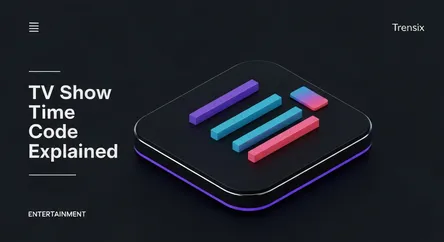Entertainment
TV Show Time Code Explained

Discover what time code is in TV and film production. Learn how this crucial tool synchronizes audio and video for seamless editing and broadcasting.
What is Time Code?
Time code is the universal clock of video and film production. Officially known as SMPTE timecode, it's a unique address assigned to every single frame of video, formatted as hours:minutes:seconds:frames (HH:MM:SS:FF). Think of it as a digital timestamp that allows every piece of recorded media, from different cameras to separate audio tracks, to be perfectly aligned. This precision is fundamental for the editing process, ensuring that what you see and hear is exactly as the director intended.
Why is it Trending?
While a long-standing industry standard, time code's importance is surging with the rise of complex, multi-camera TV shows and the boom in digital streaming content. Productions now involve more footage from more sources than ever before, often with teams collaborating remotely. Time code provides the essential framework that allows editors, sound designers, and visual effects artists to work on the same project simultaneously and seamlessly integrate their work. It's the unseen backbone that makes sophisticated editing possible.
How does it Affect People?
For the audience, the effect of time code is a flawless viewing experience. It ensures that dialogue perfectly matches lip movements and that cuts between different camera angles are seamless. For industry professionals, it's a critical tool for efficiency and accuracy. It transforms the chaotic task of sifting through hours of footage into a precise, manageable workflow. By providing a common reference point for all media, time code saves immense time and resources in post-production, enabling the creation of high-quality television shows.